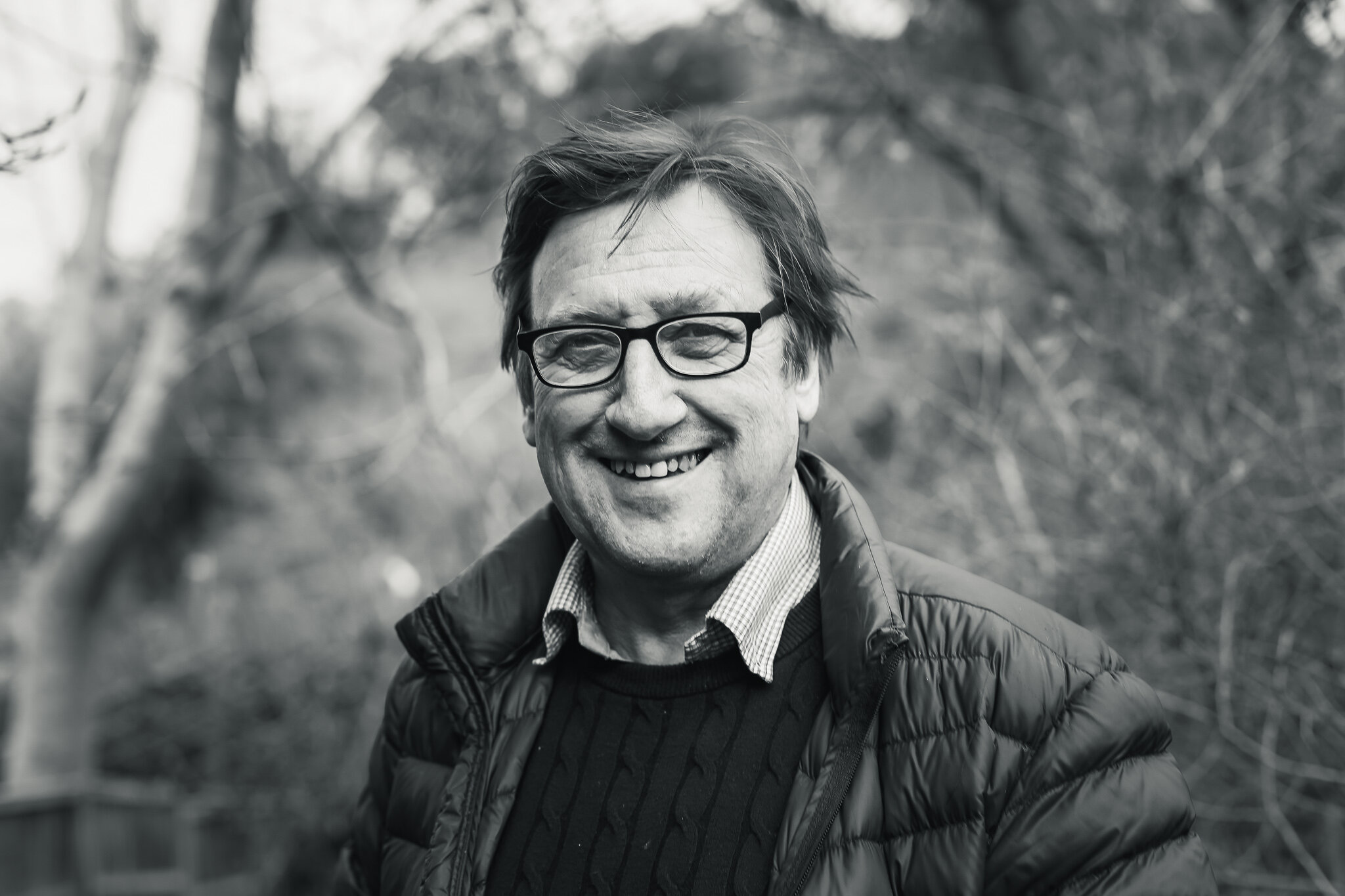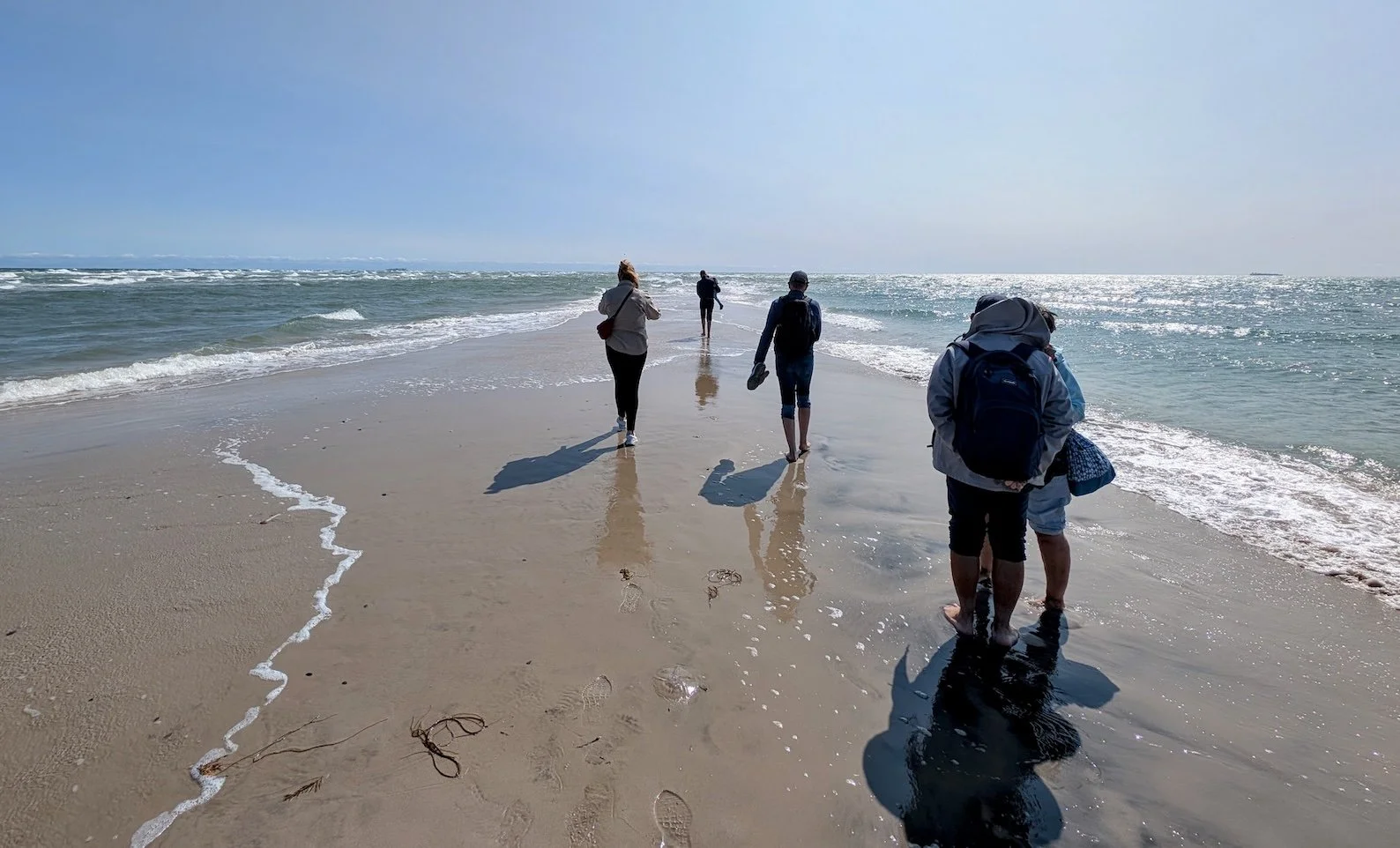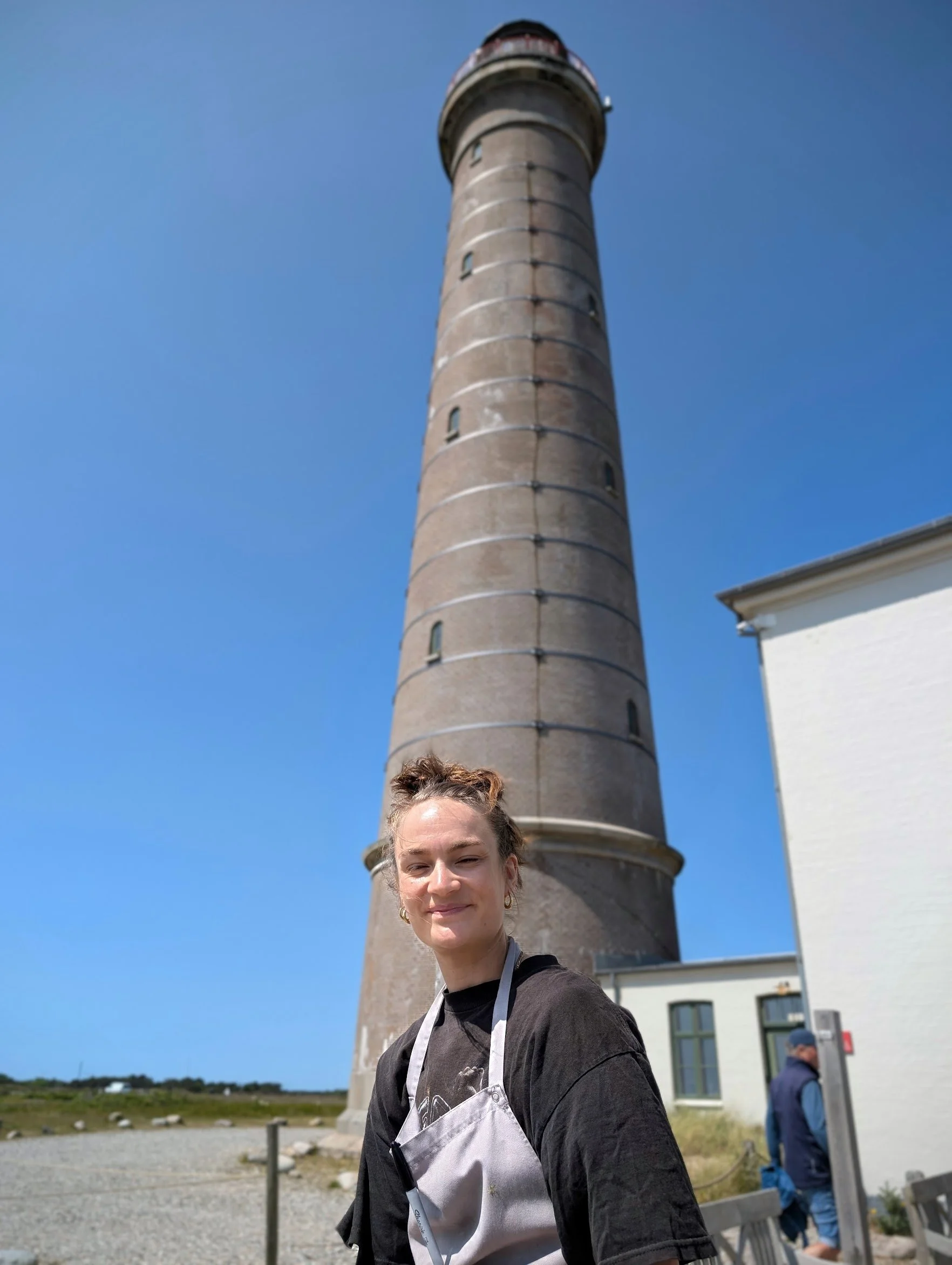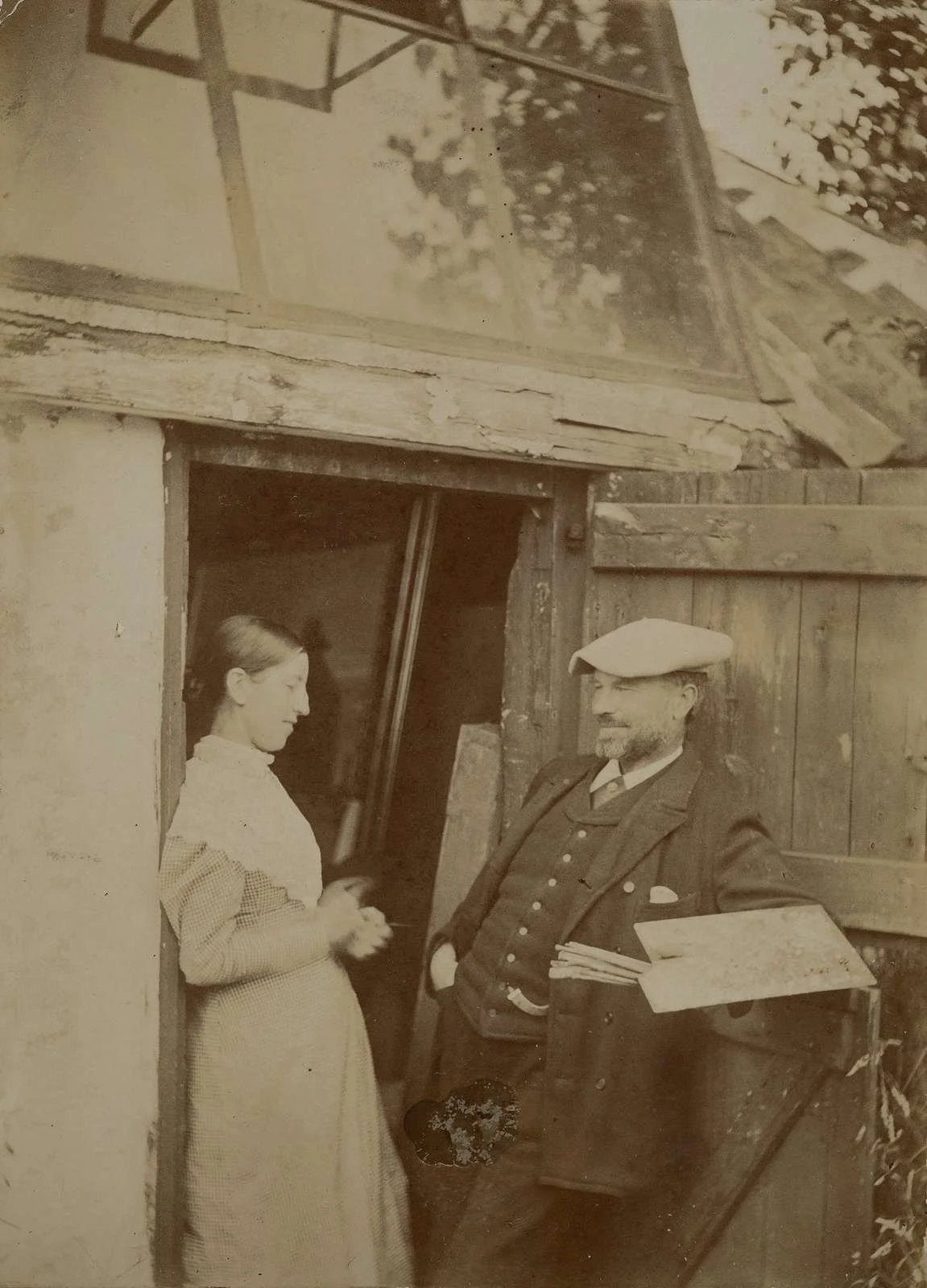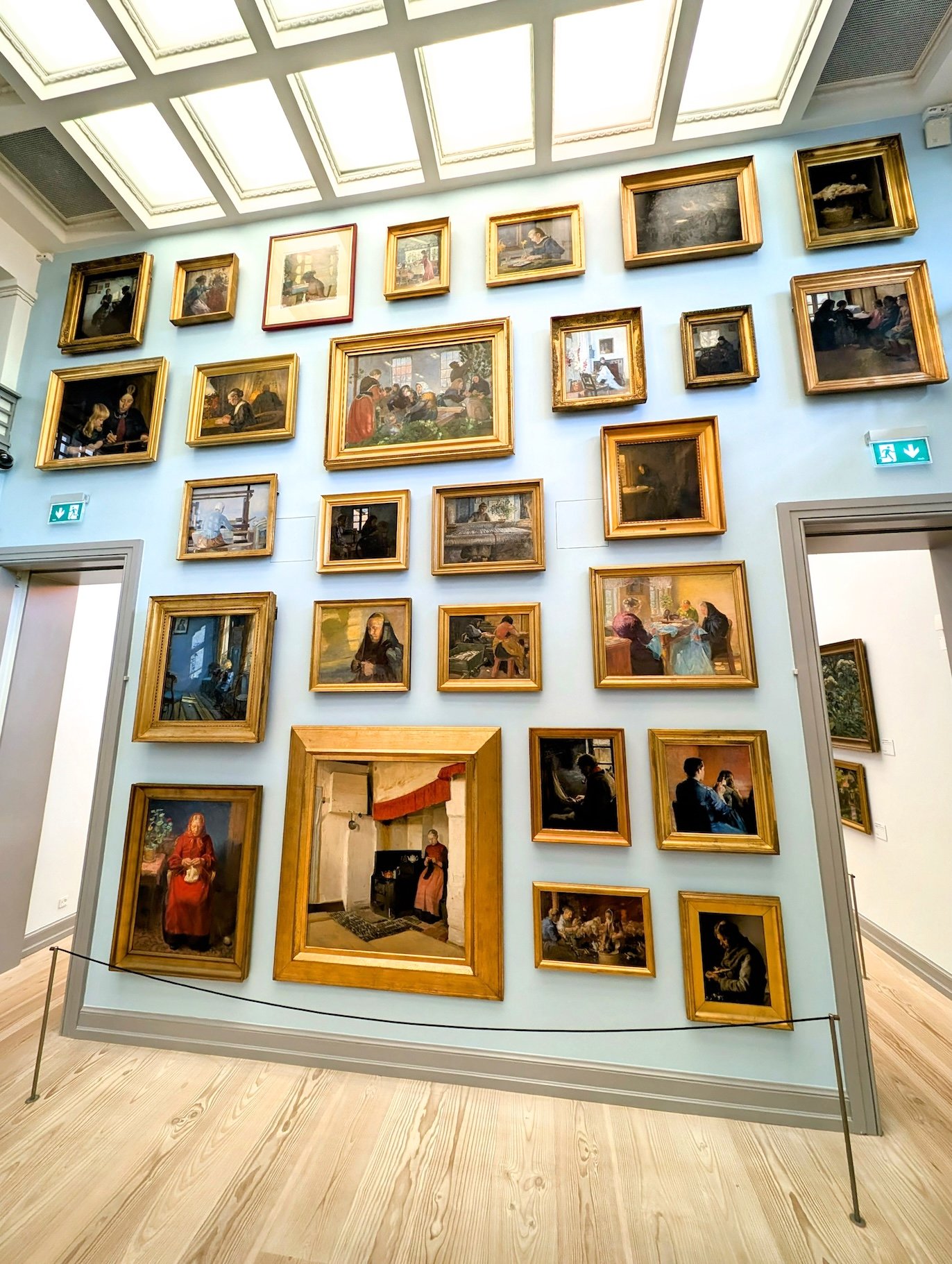Skagen, Denmark: Artists, Light and Nordic Cuisine at the Edge of Europe
Discovering Skagen: Denmark’s Light-Filled Land's End with Artistic and Culinary Surprises
Sometimes you find yourself enjoying a journey that you’ve decided to take for the most obscure of reasons. Such was the case with me last week as I strolled around a rather extraordinary seaside town, being almost blinded by the unusually bright natural light for which the place is famous.
Which, in itself, provides a clue as to why I was visiting the very northern tip of Denmark. It all began a few months ago when I attended a special conference on the future of food at the Danish Embassy in London (as reported in Hesp Out West). A tourism official said something that inspired my visit to his country’s version of Land’s End.
The author at the tip of Denmark
Skagen and the Newlyn Connection: Northern Denmark’s Plein-Air Artist Colony
“So you’ve come up from the West Country? I’ve been reading all about the Newlyn School of Artists - did you know Denmark had a similar group of painters? An entire movement of ‘plein-air’ artists who descended on an area in the late 1800s because of its special quality of light - just like the English painters who went west to Newlyn.
Paintings at https://skagensmuseum.dk/en/
“In fact, this autumn there’s going to be a major exhibition based on one of them at London’s Dulwich Gallery. You should visit the Skagen area to discover its delights and understand why these Danish painters enjoyed a very similar experience to the Cornish school.”
Breakfast Before the Hunt, Anna Ancher
Geography and Natural Light: Why Skagen Attracts Artists and Travellers Alike
I was to discover that there are a lot more similarities on my journey to northern Denmark last week. The geographic set up, for a start. The Skagen peninsula is similar to West Cornwall in that it juts out into the sea, hence all that bright oceanic light - only its progression into the waves is more extreme. If you look at a map you will see what looks like a single thin hair protruding from the very top of the head of the large Jutland peninsula. This narrow spit of land (or sand, to be precise) extends into the Kattegat and Skagerrak straits.
Put one foot in the Kattegat and Skagerrak straits
It is an unusual landscape, shaped by wind and sand. Extensive dune systems, some stabilised by marram grass and pine plantations, characterise much of the terrain. A specialised flora and fauna has evolved to cope with the sandy, nutrient-poor conditions. The white sand, by the way, adds to the extreme quality of the light.
Visiting Grenen: Where Two Seas Meet at Denmark’s Northernmost Point
Right out towards the tip you come to Skagen, a town which evolved around fishing and its strategic location. It might be the most remote part of Denmark but, in times when overland transport was difficult and slow, the area found itself at what passed for a motorway junction of early shipping routes. An extremely dangerous junction…
The sand-spit ends just north-east of town in a wild and lovely area called Grenen, but actually continues for miles out into the sea as an underwater reef, a fact which claimed a vast number of ships back in sailing days. Walking out to the very tip is a kind of pilgrimage for Danish people - thousands do it every day and the idea is that you can put one foot into the Kattegat Sea and the other into the Skagerrak.
Skagen locals used their boats for everything
Life on the Edge: Fishing, Shipwrecks, and Skagen’s Cosmopolitan Past
For centuries the hardy folk who lived here relied on fishing and whatever they could glean from shipwrecks to keep them fed and housed. Quite literally. Many of the old homes in the town and peninsula contain parts of wooden ships. Unlike some “wreckers” we know about in the West Country, these people were keen to save the lives of stricken sailors, many of whom ended up living in town for extended periods. So it always was a cosmopolitan sort of place, despite its remoteness.
Old railway leading to Skagen port
Staying at Plesners Badehotel: Historic Charm in the Heart of Skagen
So, a truly fascinating location. I’ve never really been anywhere quite like it. We spent half of last week up in those windswept northerly climes, enjoying the endless bright sunshine, the sea-views and the first class hospitality.
Plesner’s Hotel, Skagen
We stayed at the excellent Plesners Badehotel, one of the oldest and largest, right in the heart of town - a stone’s throw from the busy harbour and central pedestrian streets. I got to know head chef, Ronni Sørensen, a well-known Skawbo (someone born and bred in Skagen) and all-round good fellow whose career has seen him fishing at sea and behind the stoves. Ronni’s unique cooking style combines the best of French and Nordic cuisine and, needless to say, he really knows how to handle the local caught seafood.
Seafood at Plesner’s Hotel
Blink Restaurant: Lighthouse Dining and Nordic Simplicity
Danish cooking is not a million miles from the best of modern British cuisine - clean and bright, not too heavy, and with much emphasis on local and seasonal ingredients. An exemplar of this trend is a young woman who runs a small restaurant at the foot of the old lighthouse at Grenen. Matilde Grue is owner and head chef at the aptly named Blink restaurant - at present she only opens for lunch and serves a choice of just three basic dishes, all of which feature the very freshest veg. We had the best fish cakes I’ve ever tasted there.
Matilde Grue, at the aptly named Blink
Ruth’s Hotel and the Cider Revolution in Denmark
A couple of miles in the other direction, at Skagen’s answer to a seaside resort on the sand-spit’s north coast, Ruth’s Hotel is a famous Danish institution much beloved by wealthier Copenhagers who think nothing of motoring the six hours north to dine their way through a beachside weekend. We had a wonderful dinner there (including one of the best Bloody Marys I’ve ever had) and the next day we lunched just 100 metres away at the Sømærket wine and cider bar.
Cider at Sømærket wine and cider bar
I asked the question: “Cider bar? Why cider? I have never seen it in Denmark and didn’t know it was a Danish thing?” After which we spent a highly informative and delicious hour talking with a young man called Karl-Emil Sams, who leases the place from Ruth’s and who owns another restaurant in the main town. Cider might not be a Danish thing quite yet, but soon will be. The country is at the very beginning of a cider boom.
Meet Karl-Emil Sams: The Man Behind Denmark’s Emerging Cider Scene
“Denmark has always been known for its lager style beer, but some of us started looking at all the different apple varieties that grow here. There are literally hundreds and some are sharp and not really edible - so a few of us started trying to make cider with them.”
With that Karl-Emil poured me a glass of fizzing amber liquid he’d made with his brother, and it was fantastic. So good, it would definitely win prizes at major UK cider competitions.
Karl-Emil Sams
Brøndums Hotel: Skagen’s Culinary and Cultural Icon
I won’t be forgetting Karl-Emil’s cider, nor will I forget the outstanding multi-course dinner I enjoyed at Brøndums Hotel, which really is one of the most famous hostelries in Denmark. Famous, not only for its amazing food (my five course tasting menu featured what were arguably some of the best and most classic dishes I’ve eaten this year), but also for its long and fascinating history.
https://www.brondumshotel.com/
One tale concerns Anna Ancher, whose work will feature at the Dulwich Gallery from November until March. The story goes that the writer Hans Christian Andersen was staying at Brøndums which, at the time, was run by Anna’s family. Apparently he complained about a meal (something he certainly wouldn’t do nowadays) and this upset Anna’s pregnant mother so much she went into labour a month early...
Anna Ancher and the Skagen Painters: Danish Art History Comes to London
Anna, resultant child, began life small and weak, so she was raised in a more indulgent way than had been the case with her three siblings. When she wanted to paint and draw she was allowed to do so, and she began to show a distinct talent.
Anna and Michael Ancher: @Skagens Museums
The rest is history. She married artist Michael Ancher, and was in an ideal position to welcome the artists who were heading north to her remote area in the late 1800s. They migrated partly for the light, but also to escape age-old conventional practices being taught at the establishment art schools in places like Copenhagen. You can visit the beautifully preserved house in which Anna lived, and just across the road you’ll find the impressive Skagens Museum, founded in 1908 in order to collect and preserve the works of the Skagen artist colony and present them in the environment in which they were created. Its galleries are a delight - as is the town’s other major museum, the Kystmuseet, which shows the way in which people used to live in these strange parts.
Traditional boat at the excellent Kystmuseet,
Final Thoughts: Why Skagen Should Be On Your Northern European Travel List
In a nutshell, I very much enjoyed a stay in this Scandinavian version of the West Country. Skagen is an extraordinary place, well worth visiting if you’re ever heading north to avoid the onslaught of summer heatwaves.
The Grennen area of Skagen
SIDEBAR 1
Anna Ancher Retrospective – Dulwich Gallery (4 Nov 2025 – 8 Mar 2026)
The first major UK exhibition dedicated to Anna Ancher (1859 – 1935), featuring 40+ paintings on loan from the Art Museums of Skagen.
Artworks at the art museum in Skagen
SIDEBAR 2
Travel Info – Getting to Skagen
Martin flew direct from Stansted to Aarhus with Ryanair, then drove north to Skagen (approx. 2h 40m).
Plesners Badehotel: from £136/night
More info:
Stansted Airport Parking:
Martin parked with APH.com – from £110/week in June–July.
Old and new trawlers at Skagen Harbour
